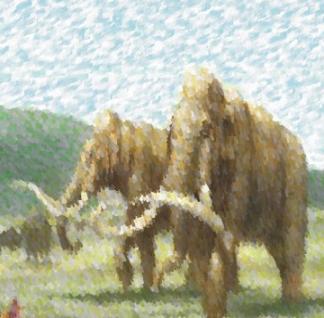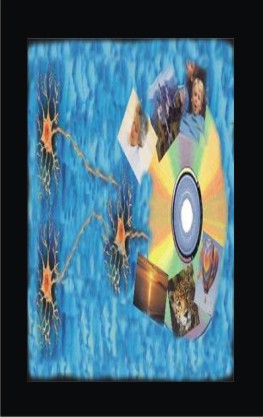|
N6, NAGOYA, JAPAN. APRIL 25th, 2051
Ise and Astuta, Shinto sanctuaries in the Japanese city of Nagoya, look to the sky, seeking their kami (gods), but beneath the incandescent dusk, its habitants return from a pragmatic day just like one that the new Japanese modern idiosyncrasy establishes. They have all been mute witnesses to the miracle, which seems to have consumed them. The most complex piece of matter from the cosmos has opened a tiny door that we can get close to and be able to contemplate what a small fragment of its interior is like…and take notes! This is what the team of the physiologist and neurologist Matsuo Ashikaga achieved, formed in almost equal parts by professionals of utmost first rate magnitude in medicine and in mathematics and advanced computer technology.
|
|
Think about your whole name. First the letters that it is composed of, just like we practiced. –The so-called Wernicke area,[...] is the first thing that lights up on[...]Very good. Now, about the sonority in Japanese, the sum of the phonemes that integrate it. That’s it. Perfect. |
|
Let’s talk about memories. Not just any information, but concrete memories of a concrete person, the ones that lie now, duplicated, codified in a digital-quantum computer support. The great advances in neuro-physiology (the study of the electro-chemical process through which neurons receive and transmit information), the new predictive algorithms that govern the cortex’s ability to work, the discoveries oriented to electro-kinesis, the new cartographic map of the cerebral cortex, have all been key findings to achieve it. The subject that “loaned” these little pieces of memory to science, responds to the initials J.N.D, is fifty six years old and frequented cots and electrodes at the Technological University Institute of Nagoya for seven months. The city, located on the southern coast of Honshu Island, has entered in the history of science as the headquarters of one of the most awesome experiments ever carried out and one that opens up a universe of future possibilities that we are not capable of even imagining.
It is very important to highlight, now getting into the matter, that the conscience of J.N.D is unharmed after the trial, that he is in perfect state of health and that what Matsuo Ashikaga’s team did in some way could be compared to the concept of transfer, and yes, in some non literal way, to duplication or copy. This means that the technicians, at the crucial moment, pointed the arrow of their mouse at the icon of the two little overlapping papers, and not at the scissors. The truth is that if they had mixed it up, it wouldn’t have worked, really. The joke can contribute to explaining a little bit better what it was that happened in that aseptic laboratory where neuro-physiology and computer science got together for a marvelous cause. Let’s move on to the next concentric circle that brings us progressively closer to the nucleus of what happened, although we should warn you not to get your hopes up: At the end of the article we aren’t going to get into the above mentioned nucleus on a technical level because of evident neuronal limitation (yours, please forgive us, and of course, ours as well) because only half a dozen people in the world would be able to really understand what happened there. If you still want to dig a little deeper and “peel off the layers of the onion” we earnestly recommend that you read the extraordinary interview with the “father of the creature”, doctor Matsuo Ashikaga, interviewed by our director. We will keep telling you the “what” and let the experts decipher the “how”.
-Input: Think about your whole name. First the letters that it is composed of, just like we practiced. –The so-called Wernicke area, responsible for the sensorial interpretation of the heard language, is the first thing that lights up on the scientists’ three dimensional screens- Very good. Now, about the sonority in Japanese, the sum of the phonemes that integrate it. That’s it. Perfect.
It seems this given name is the first decoded-coded word that traveled by cable and was stored in the computer support (output). The people responsible for encyclopedias worldwide are anxiously waiting for the name to be revealed “J…”, of the subject, to include them in their editions as a historical milestone in the annals of science. The neuro-transmitters (acetylcholine and the noradrenaline and all the information that revolves around them) ended their trip metamorphasizing themselves, in the end, into zeros or into spins, essential passports to get into a modern computer support. After the simple concepts, it moved on to the complex ones. His childhood house. His mother figure. His trip to the selenite Base, Tranquilitatis, and his flirtation with Total Virtual Reality.
|
The volunteer had to do complex training, using oriental millennial techniques, where intense concentration in one concept or one idea was the objective. J.N.D had to train his mind to save his memories, evoking them by following systematic guidelines: Chronology, location, visual description, auditory-odor description, complete emotional description, interrelation with other memories, etc. It was precisely the emotional component that contains our memories that was, seemingly, one of the most complex battle horses that the Japanese experts had to fight against for decades. Separation was discarded because without our feelings, memory becomes “disabled”. Well, more like tetraplegic. |
|
Could we some day transfer ALL the cerebral information of an individual? Where would his conscience lie? Would the inverse process be possible in, for example, victims of cerebrovascular accidents? Would it be possible to periodically “insufflate” memories that an Alzheimers sufferer had previously stored? Could we export memories, events lived from one human to another? |
|
|
Decoding-coding this emotional substrate was a titanic labor, if not to say Homeric, worthy of a mythological deed like the twelve works of Hercules. On the other hand, unearthing very concrete episodes from his past became his work for various weeks. The volunteer did it continuously connected to an apparatus that graphed his brain in real time, and concretely his limbic system (septum, hypothalamus, thalamus, corpus callosum, tonsil, hippocampus and mesencefalon), responsible for memory, emotions and memories, with mixed magnetic resonance techniques, positron scans, and other three-dimensional scanning procedures. None of the technicians’ questions surprised the subject objected to the trial. |
Another relevant piece of information: All of the memories evoked by the individual and subsequently stored in the support system classify in the so-called long term memory and situated in the cerebral cortex (and coming from areas of the median temporary lobe). Our mind is a plastic organ, meaning, changing, it constantly modifies its dentritic and nervous ramifications; it modifies, among other things and with time, the place where information is stored and, in this case, the oldest was the one that gave scientists a sharper electro-chemical reflex for the test. The process was extremely complex and the information has only been decoded-coded after numerous previous tests that determined, among other things, the interrelation between memories. Strangely, all these previous tests were used to dig up and consolidate aspects, or “photograms” of the most remote memories, whose mere initial evoking was more costly. “This has all been worth it, even only that concerned with the ‘resuscitating’, my mother figure would have never imagined this”, J.N.D. said at his first appearance before journalists.
Like we said before, the spectrum of possibilities that this Japanese test opens up puts the remotest paths of our imagination to a test: Could we some day transfer ALL the cerebral information of an individual? Where would his conscience lie? Would the inverse process be possible in, for example, victims of cerebrovascular accidents? Would it be possible to periodically “insufflate” memories that an Alzheimers sufferer had previously stored? Could we export memories, events lived from one human to another? Would our whole learning system be revolutionized by this finding? This last question might produce shivers or vertigo. Well, both. If a virtuous pianist spilled his memories of how he learned his sensational aptitude, in an orderly and gradual way, could any of us interpret Ígor Stravinski after a “synaptic spill”?
Santiago Ramón y Cajal would turn over in his grave…
|
VISITE OTRAS NOTICIAS:
DESARROLLAN VEHÍCULO ANTIGRAVITATORIO |
|
PROTOCOLO GENÉRICO PARA CASOS DE ONCOLOGÍA HEPÁTICA |
|
SEÑALES INTELIGENTES PROCEDENTES DE ANDRÓMEDA |
|
PRIMER TRANVÍA POR LEVITACIÓN MAGNÉTICA EN ROMA |
|
PAREJA DE MAMUTS CLONADOS CONCIBE UNA CRÍA |
 |
UNIFICADA AL FIN LA REALIDAD VIRTUAL TOTAL |
 |
REDUCCIÓN DE ASESINATOS EN USA CON TÉCNICAS PRECOCES DE DETECCIÓN |
|
GENERAN NUBES ARTIFICIALES SOBRE BURDEOS |
|
LEGAL NOTICE RETURN TO TOP OF PAGE WRITE US A COMMENT !! |
